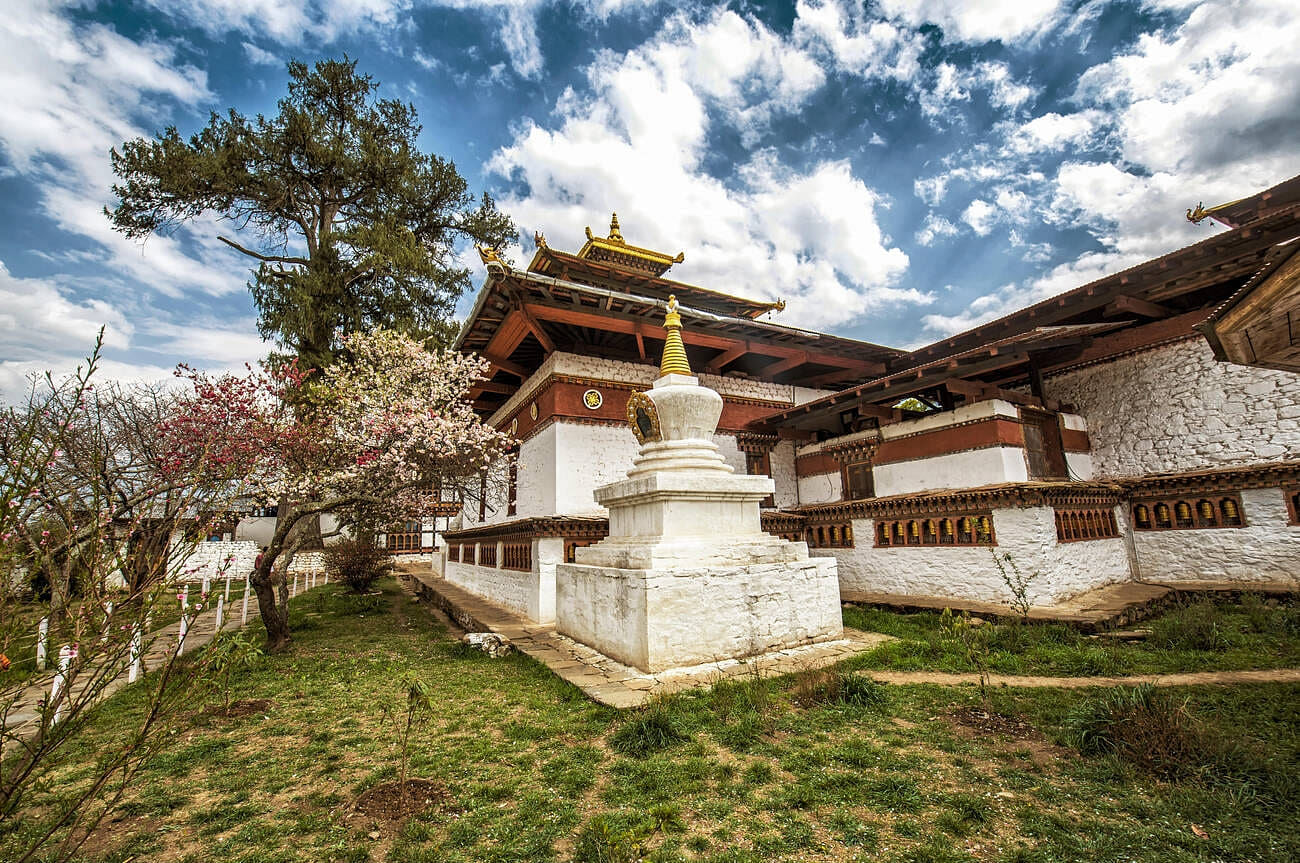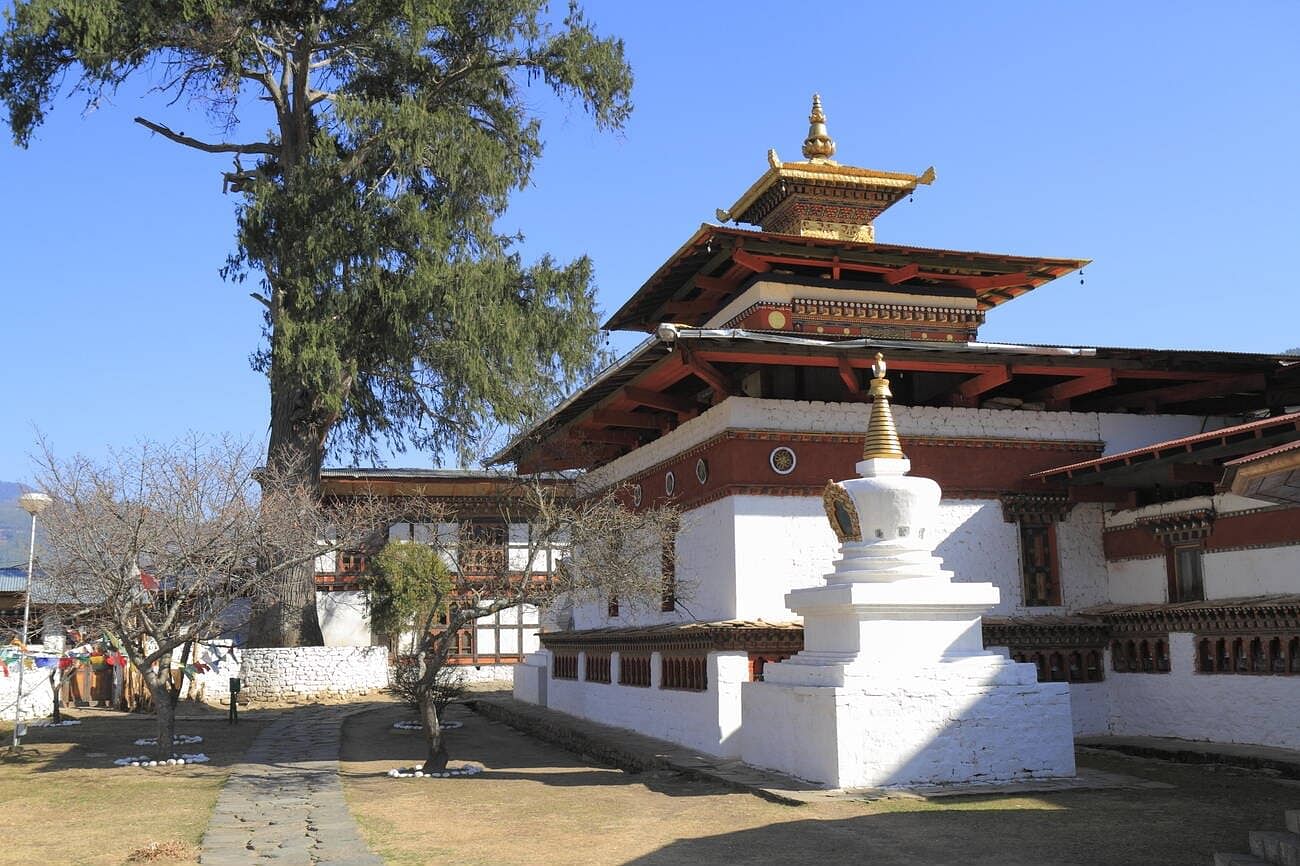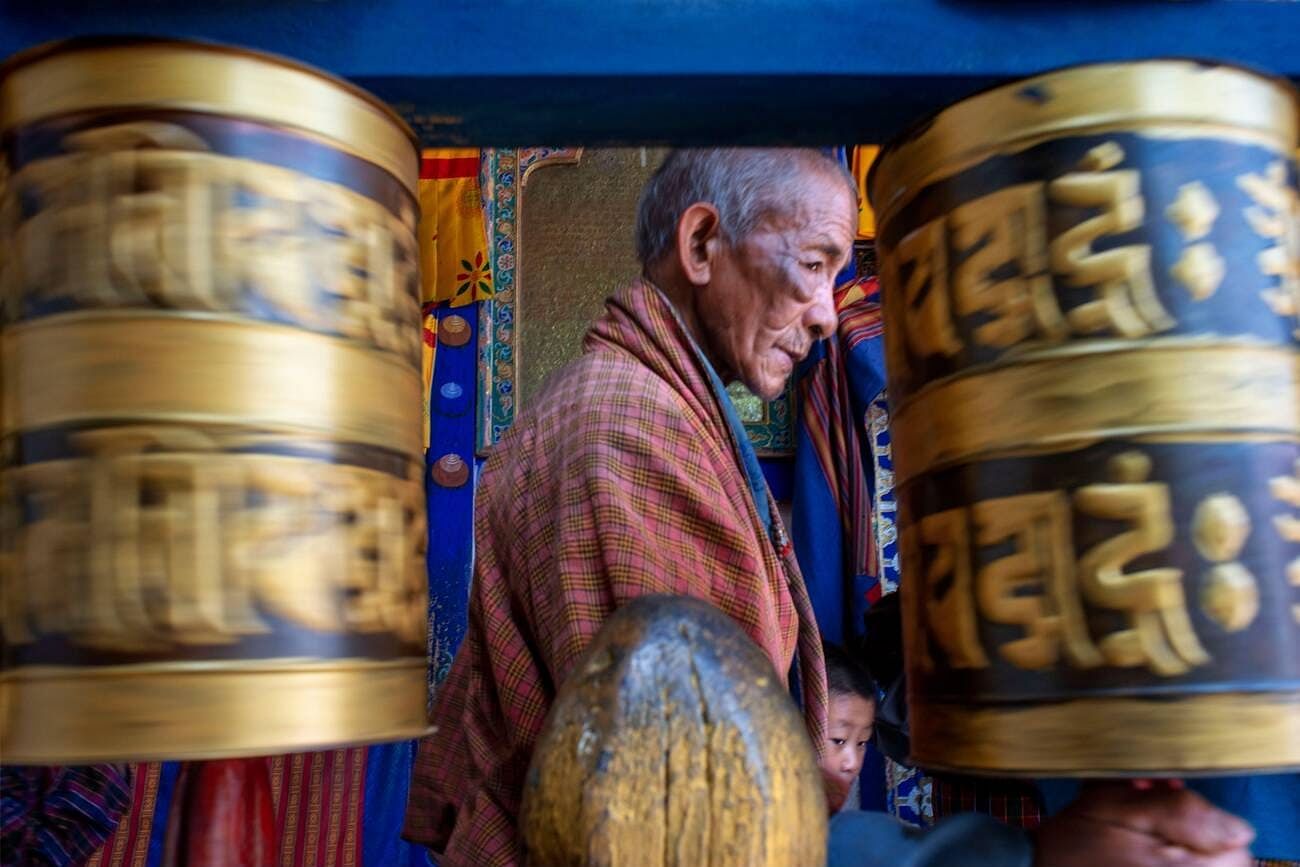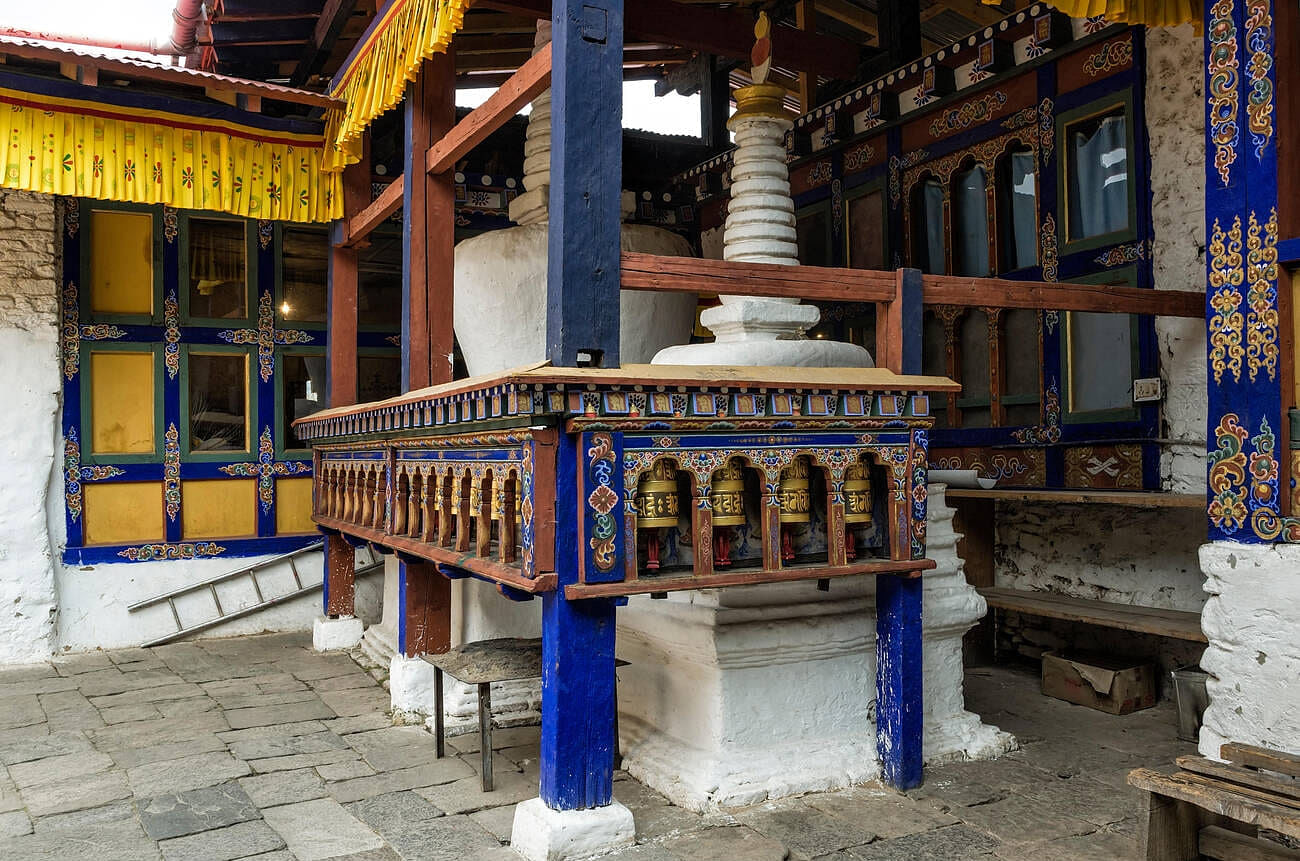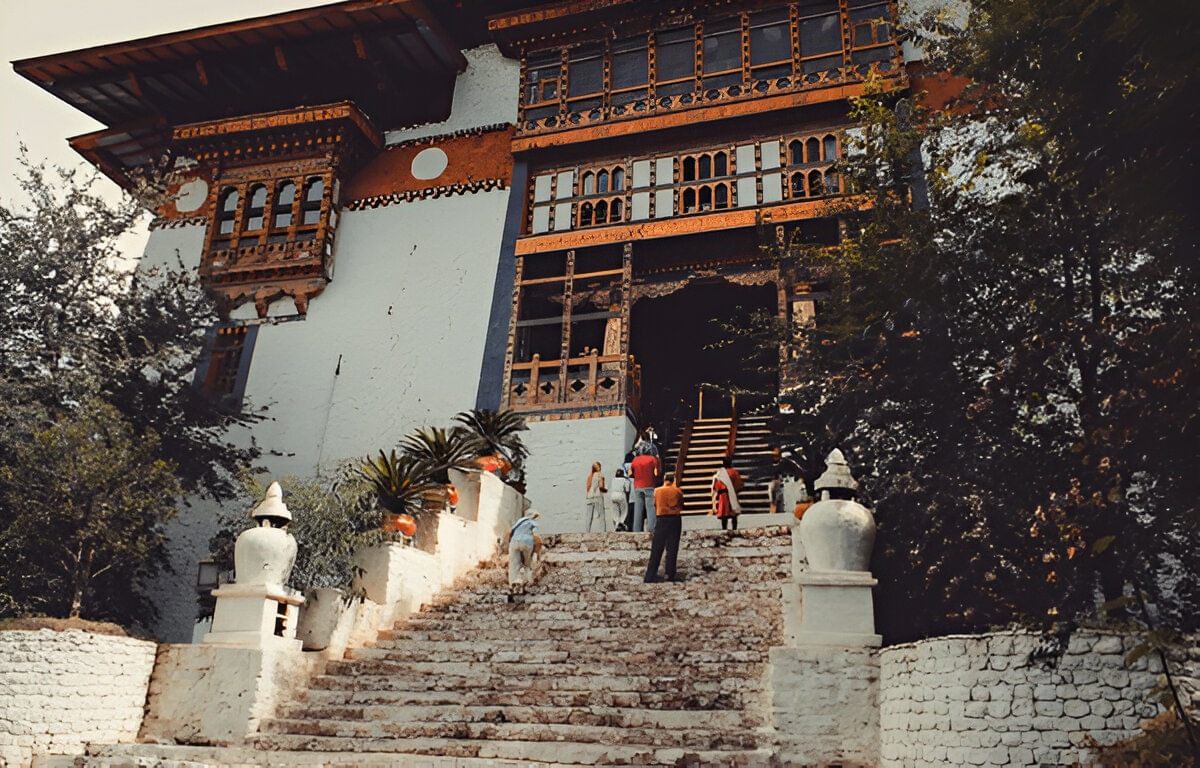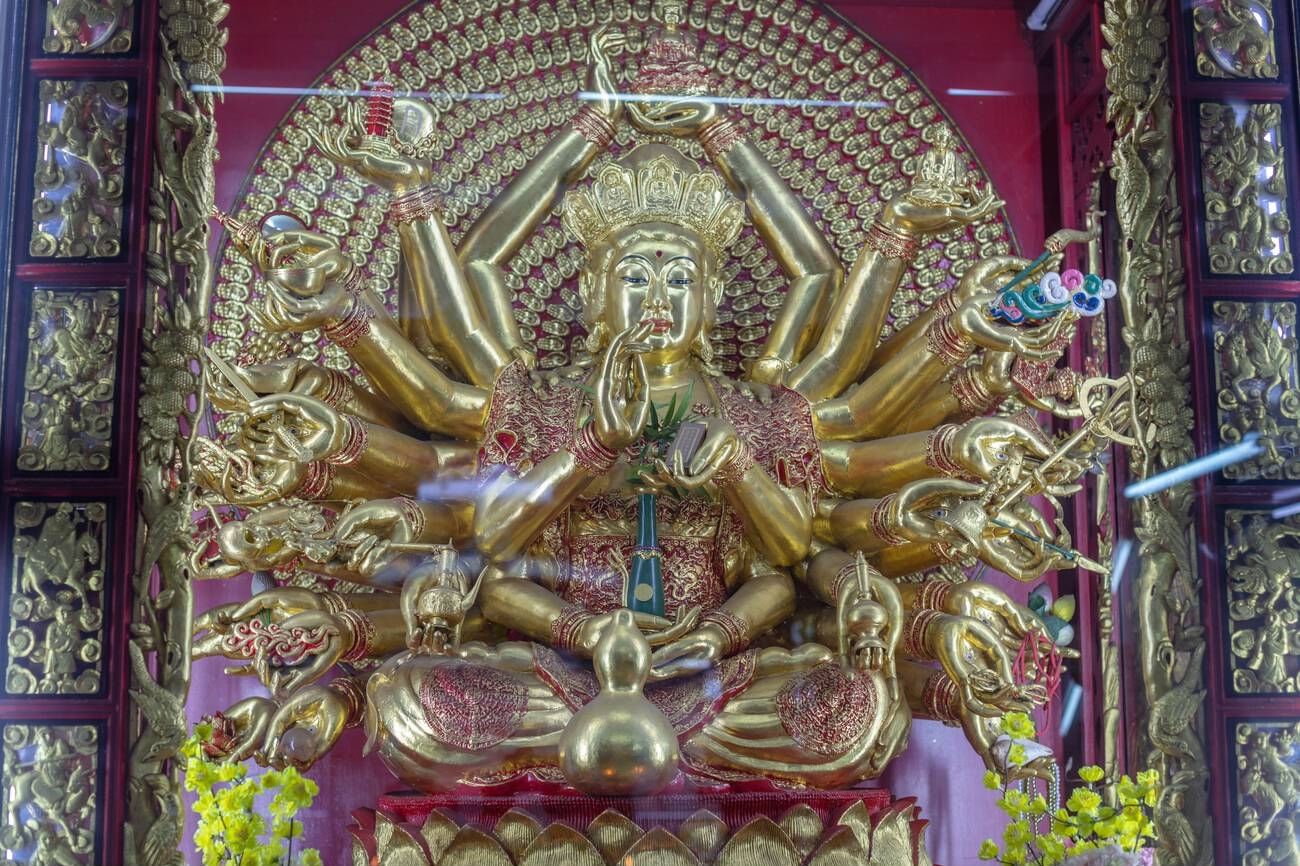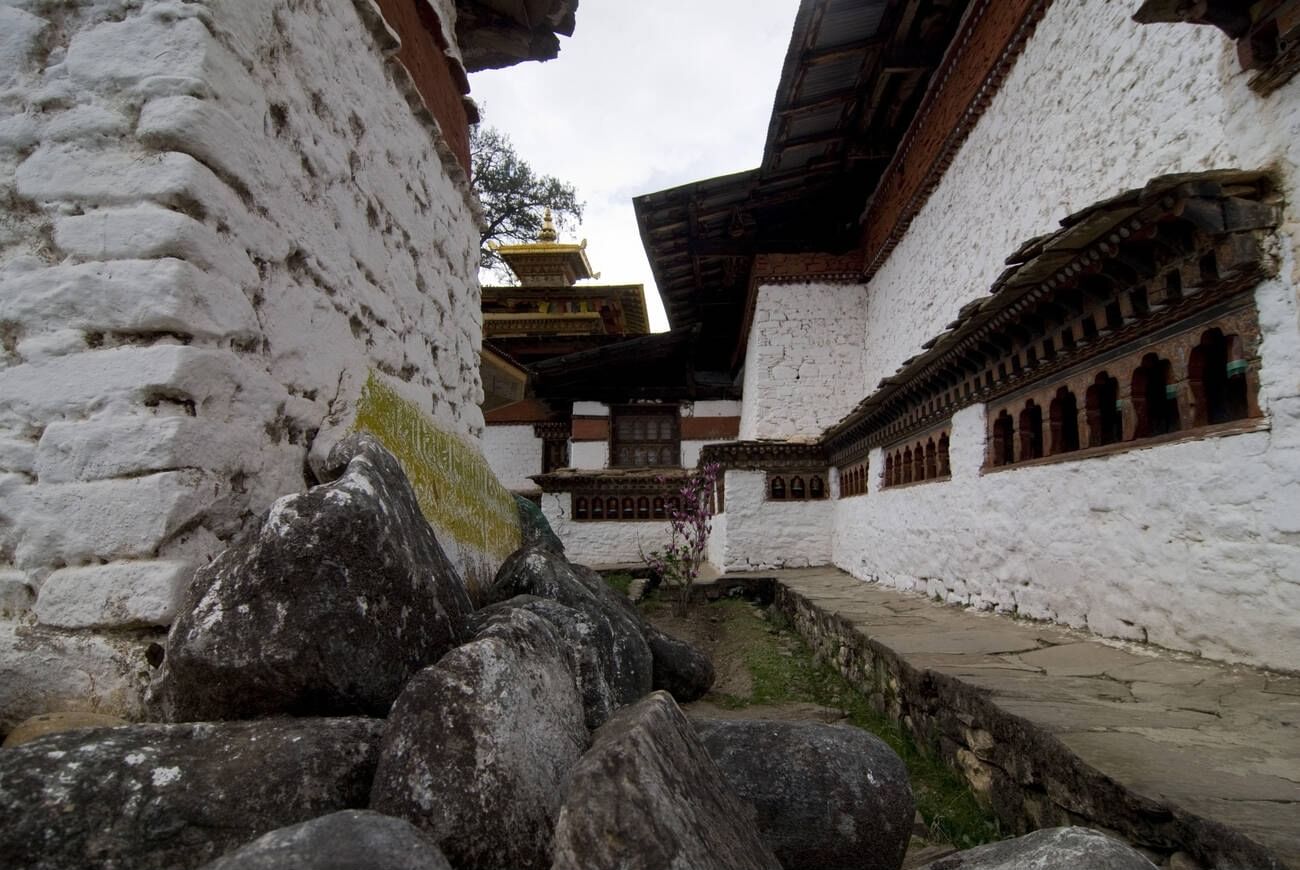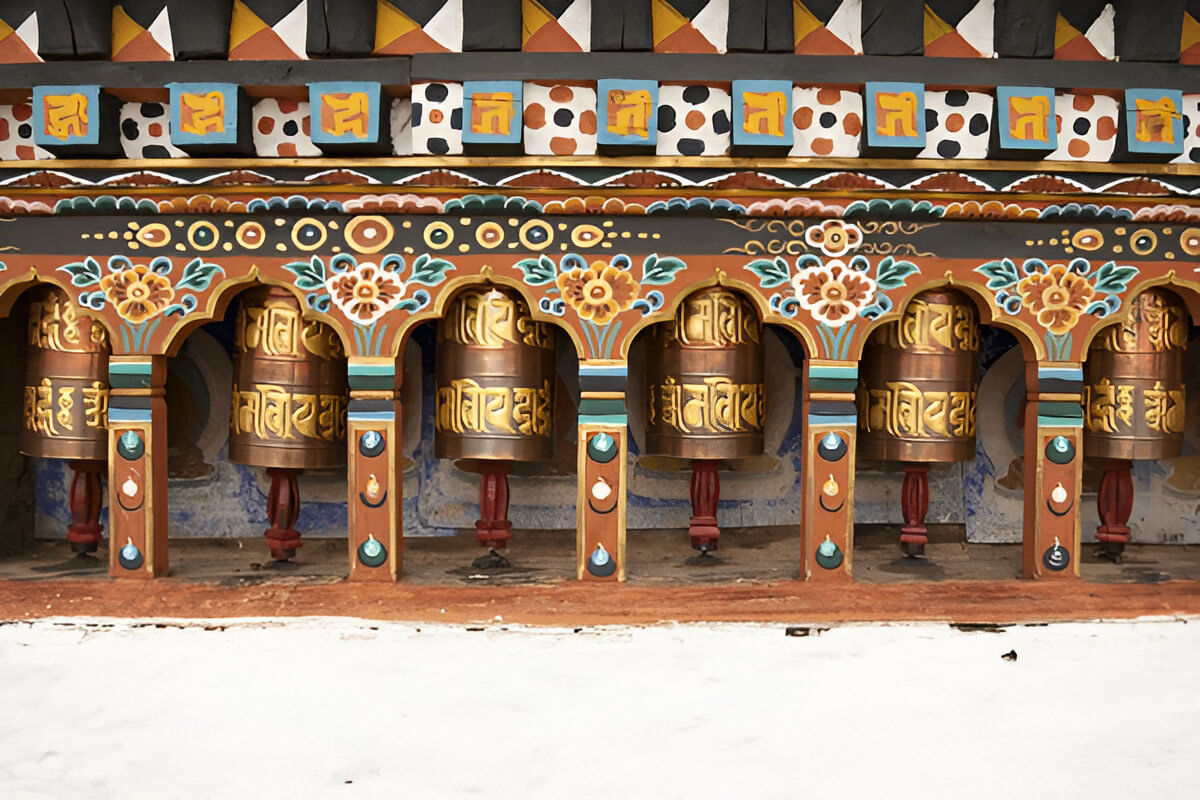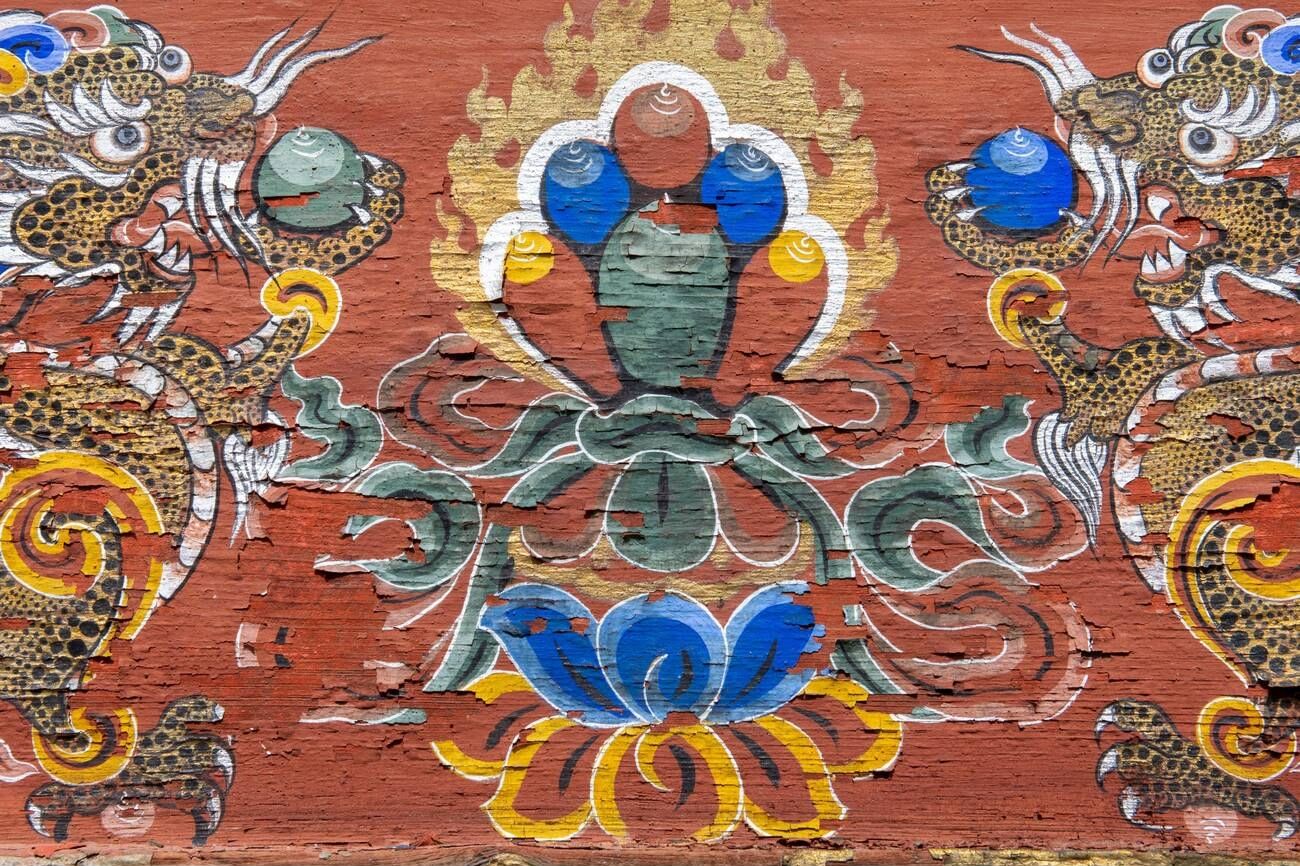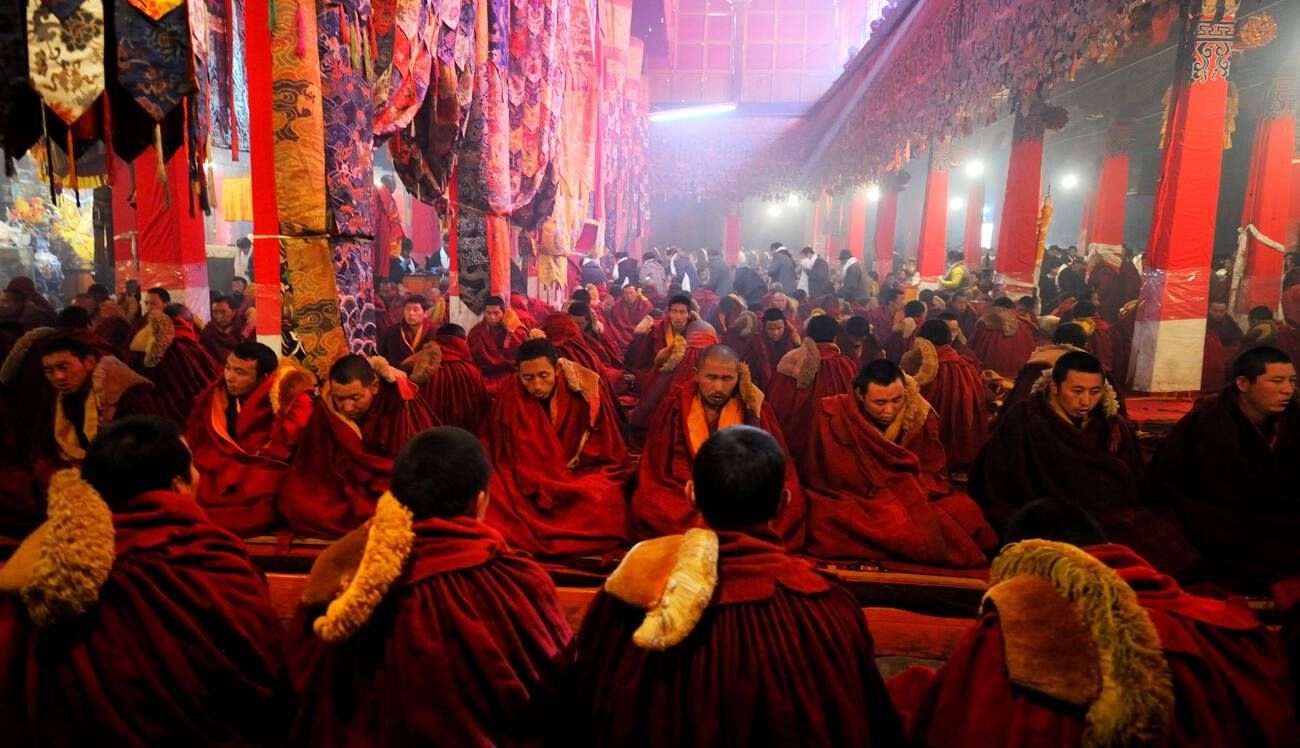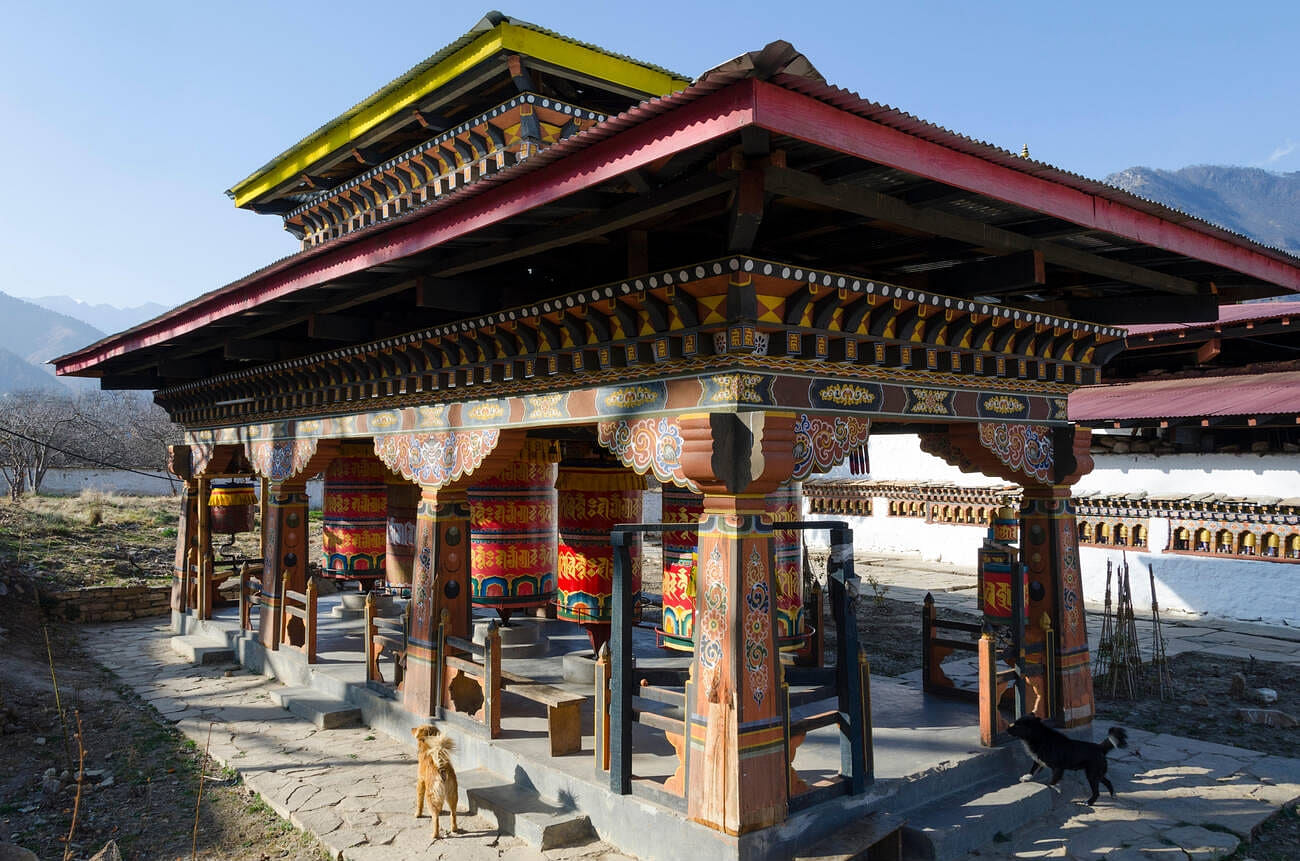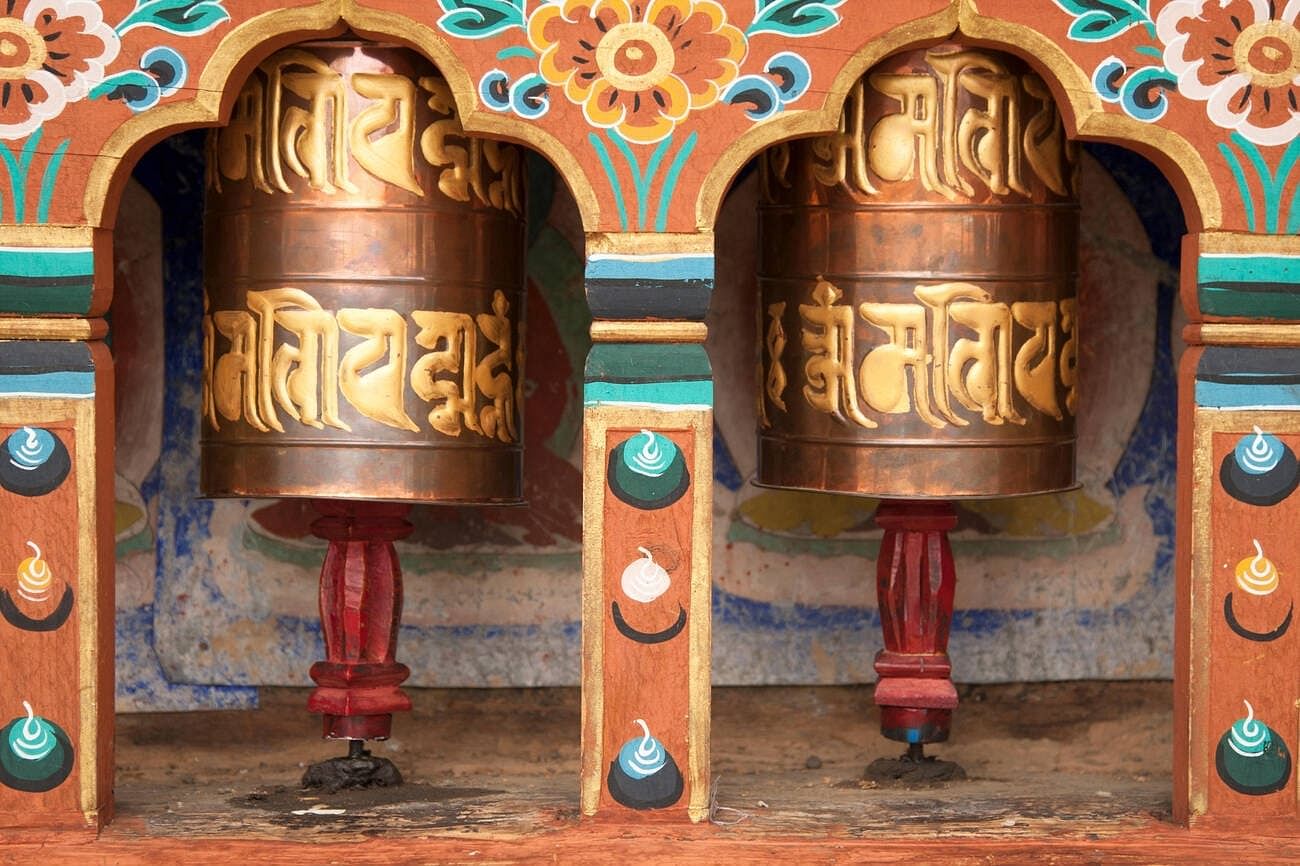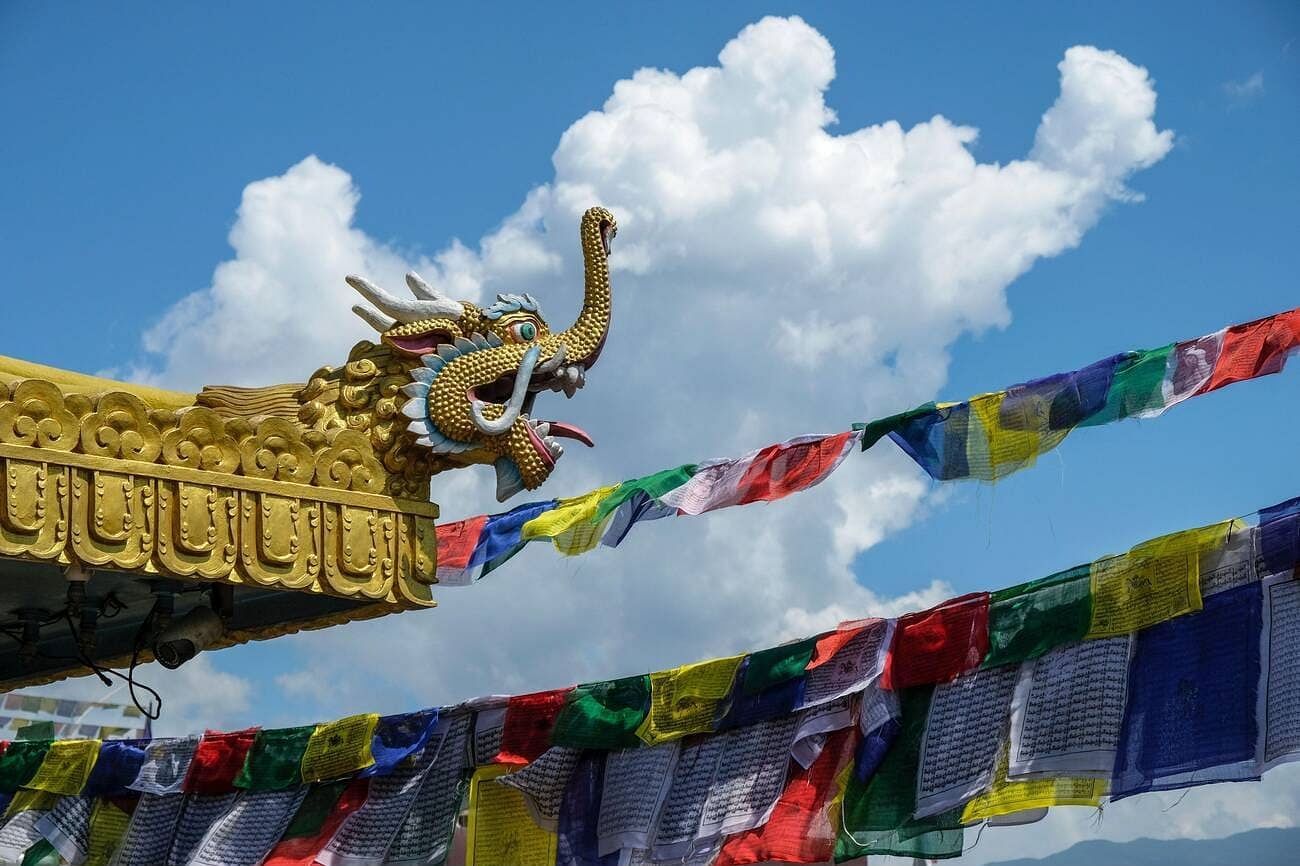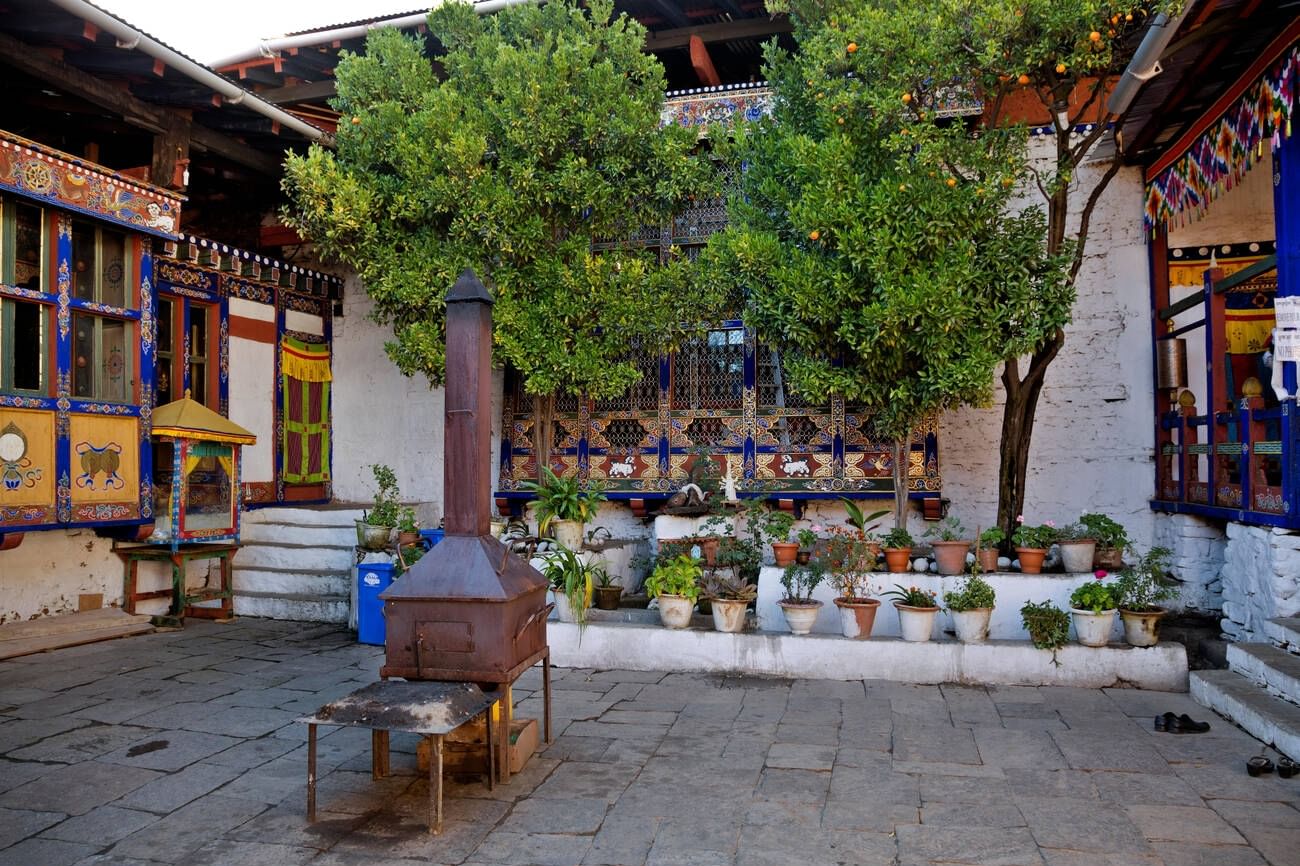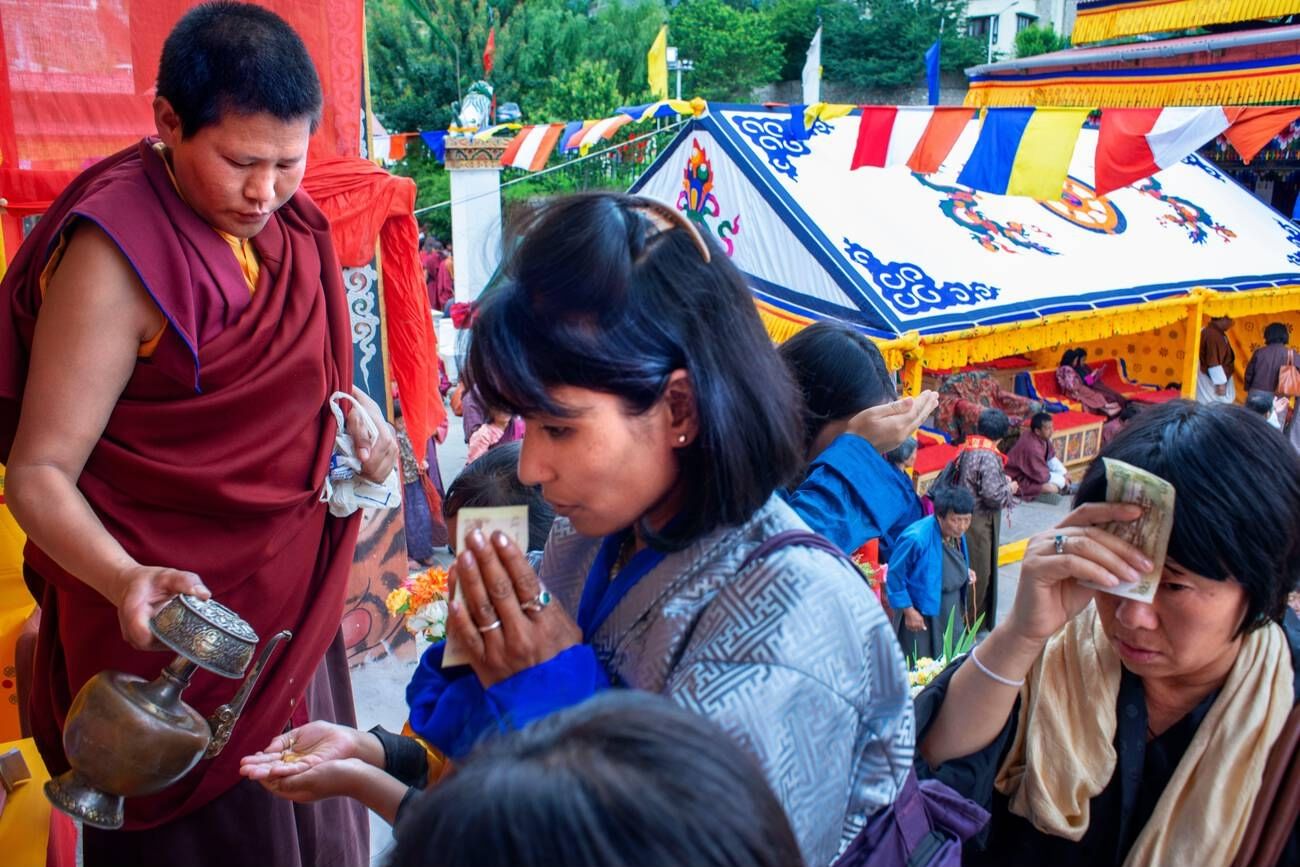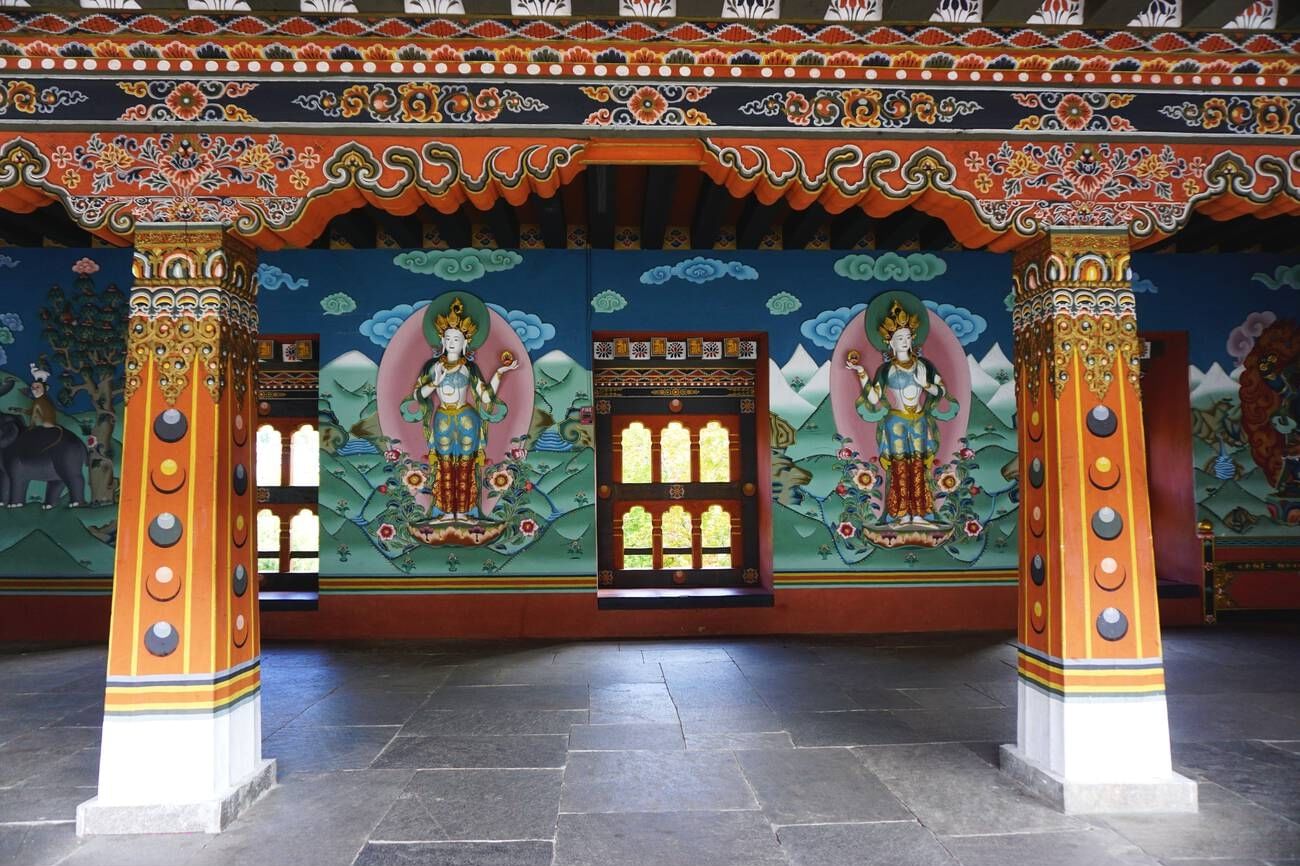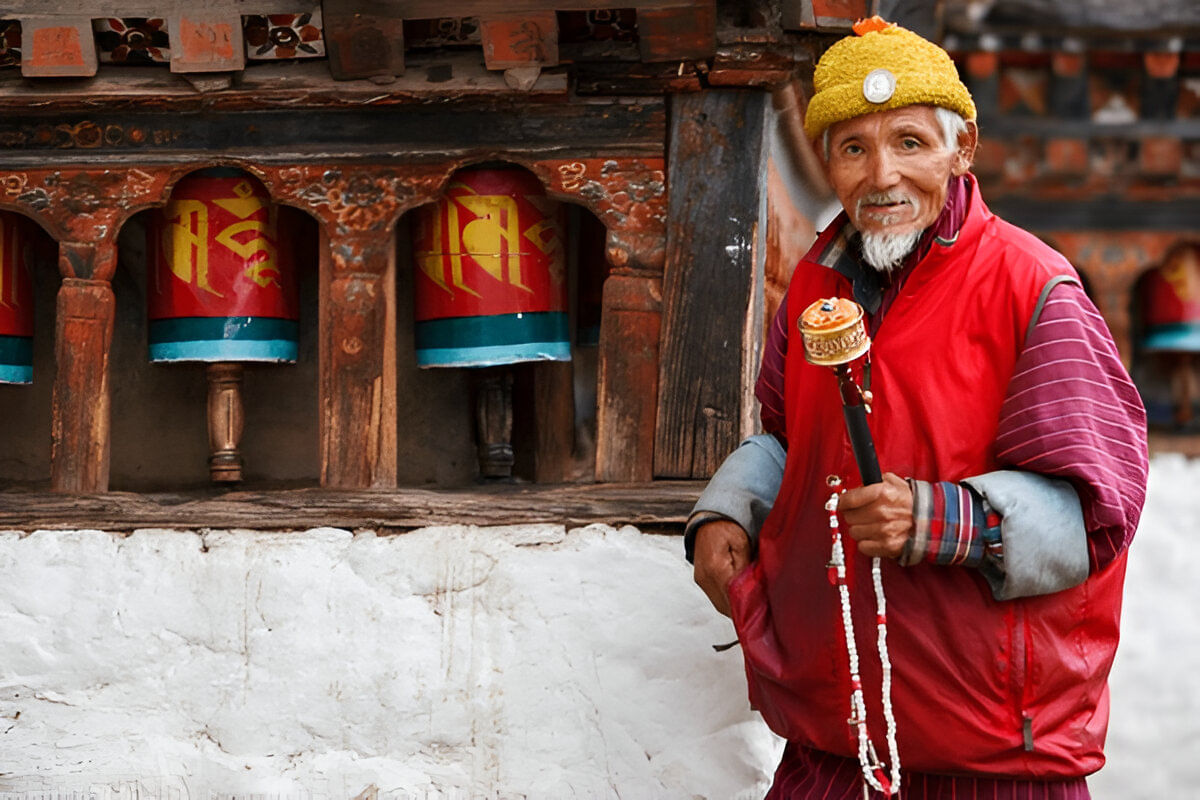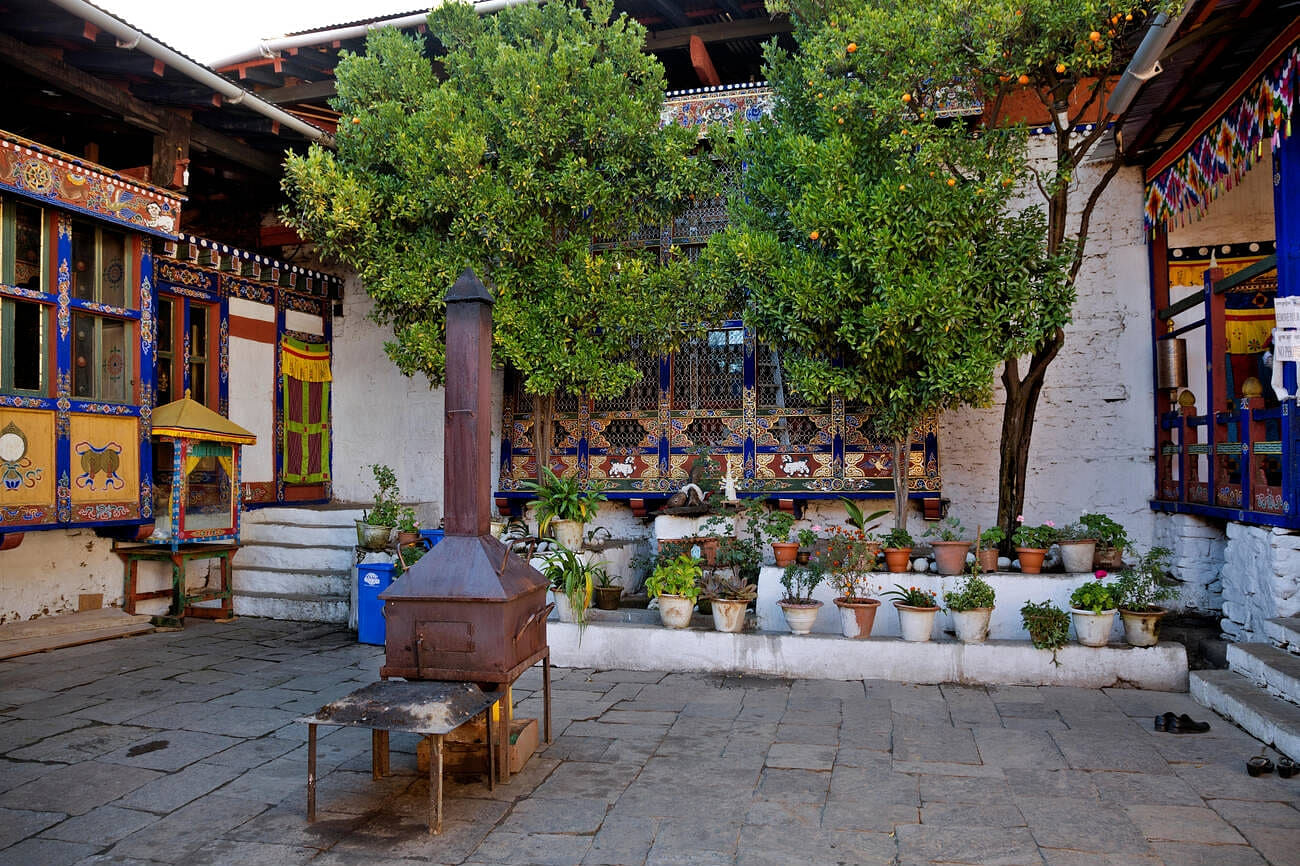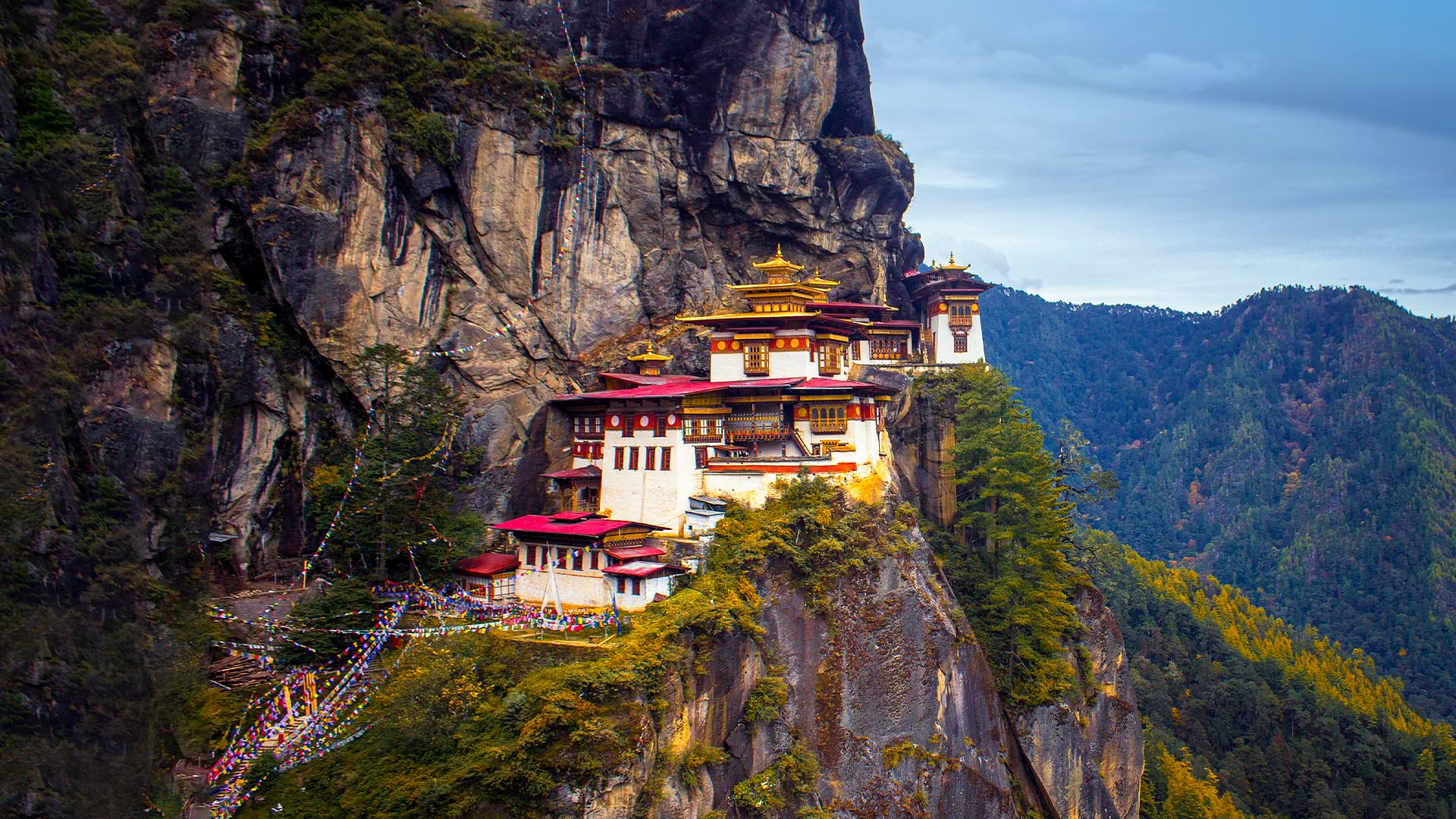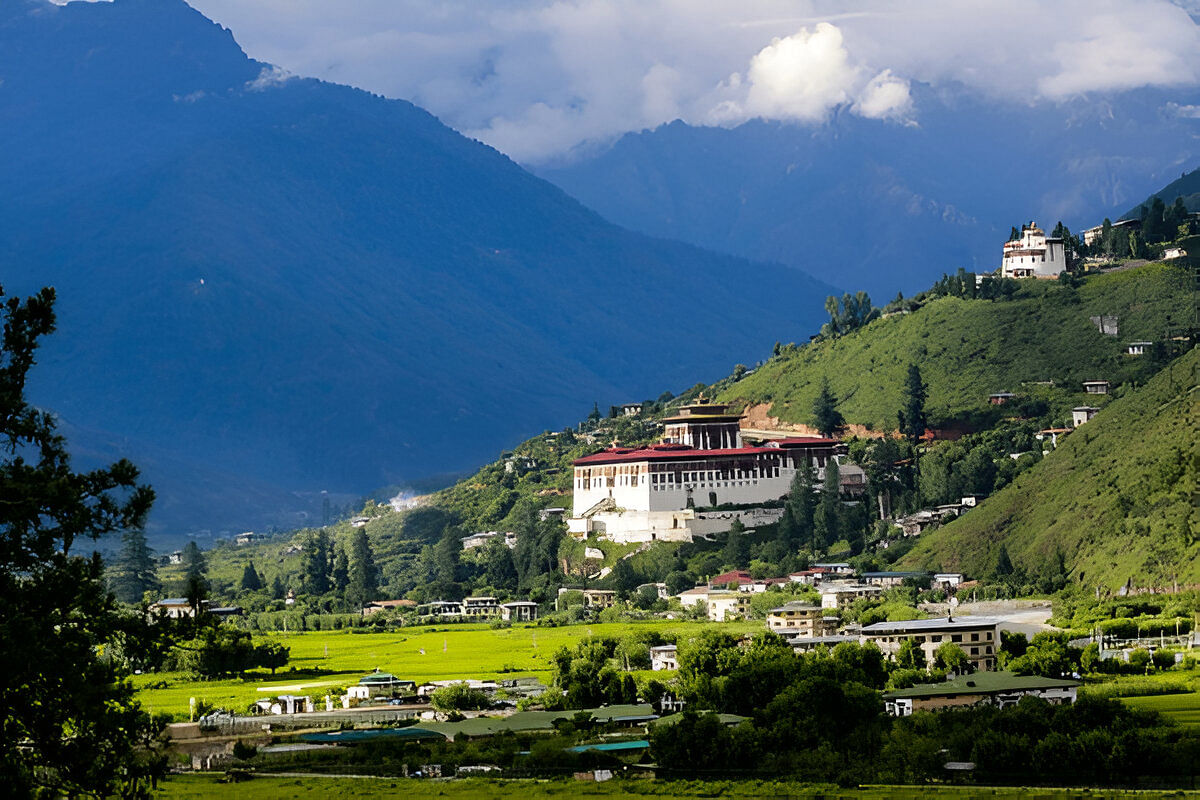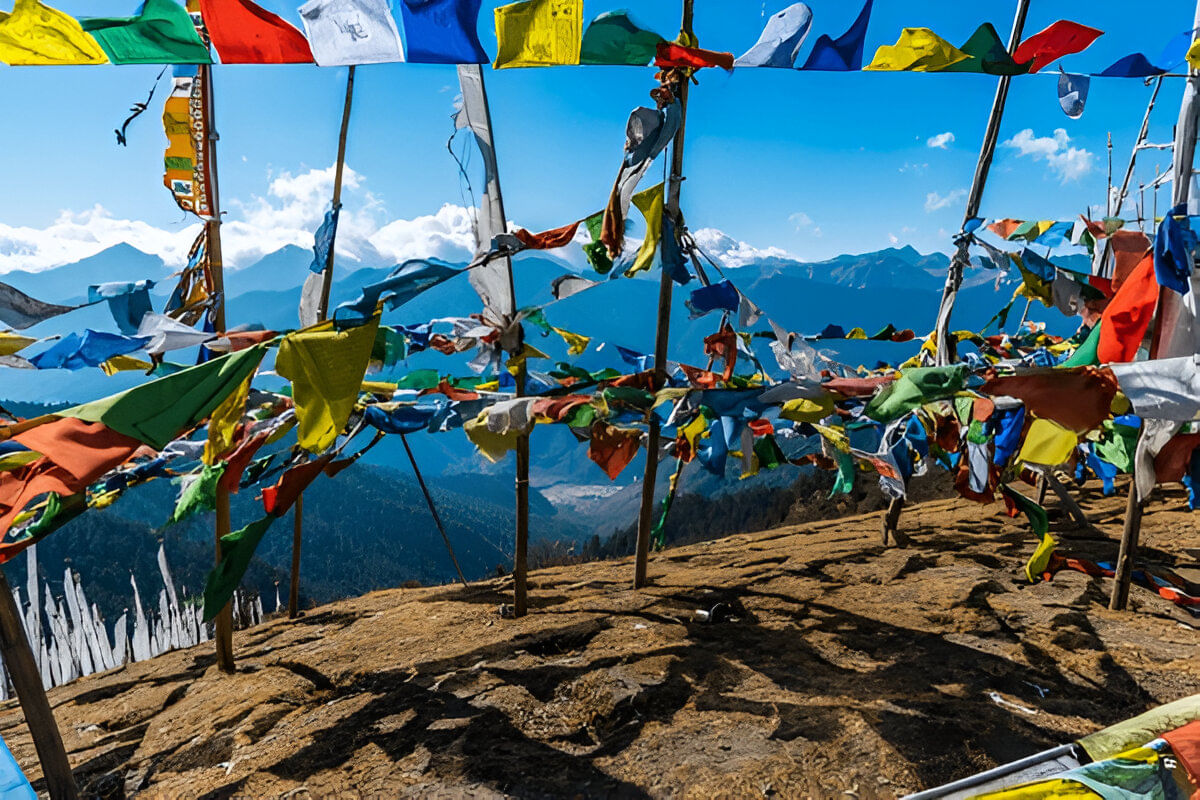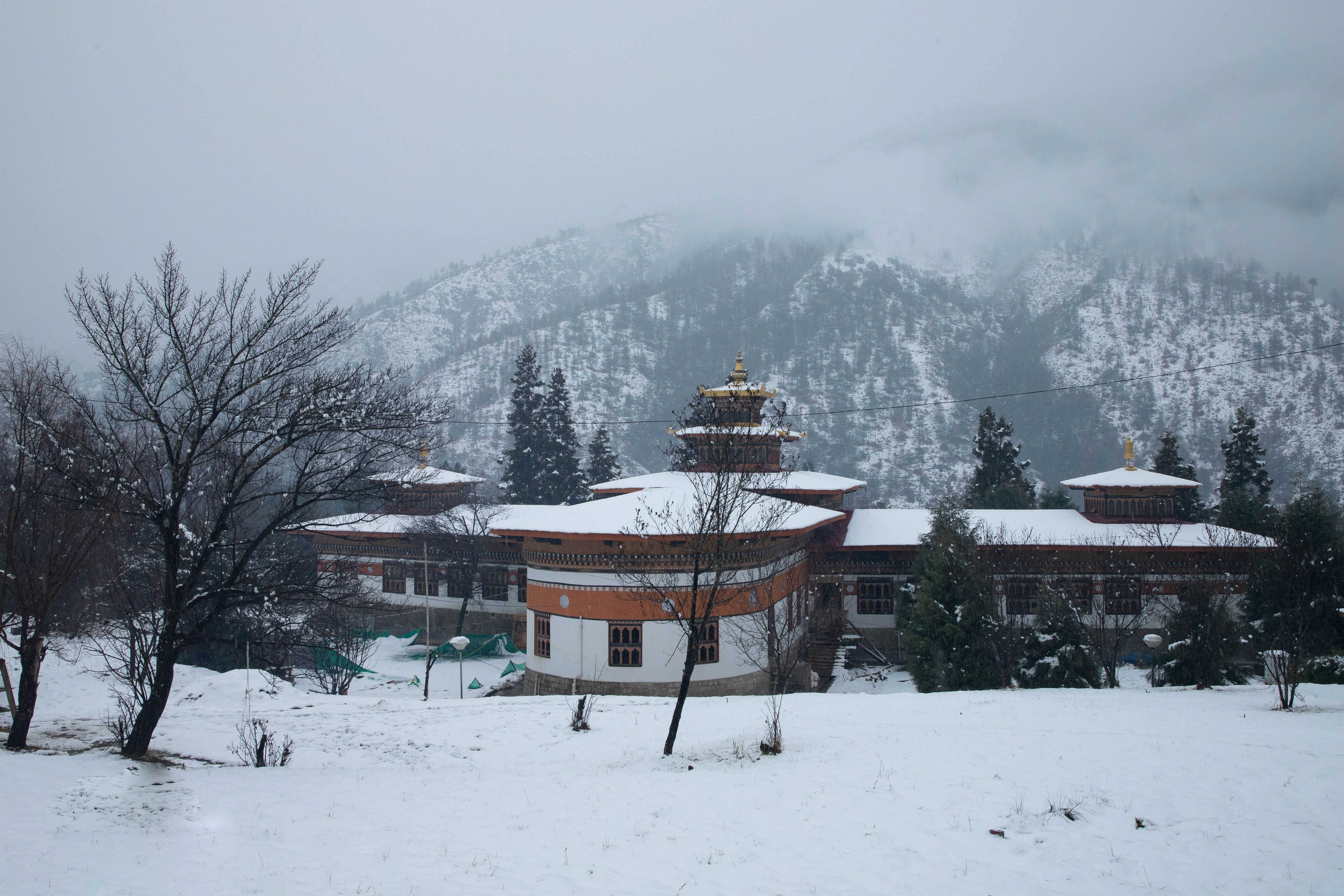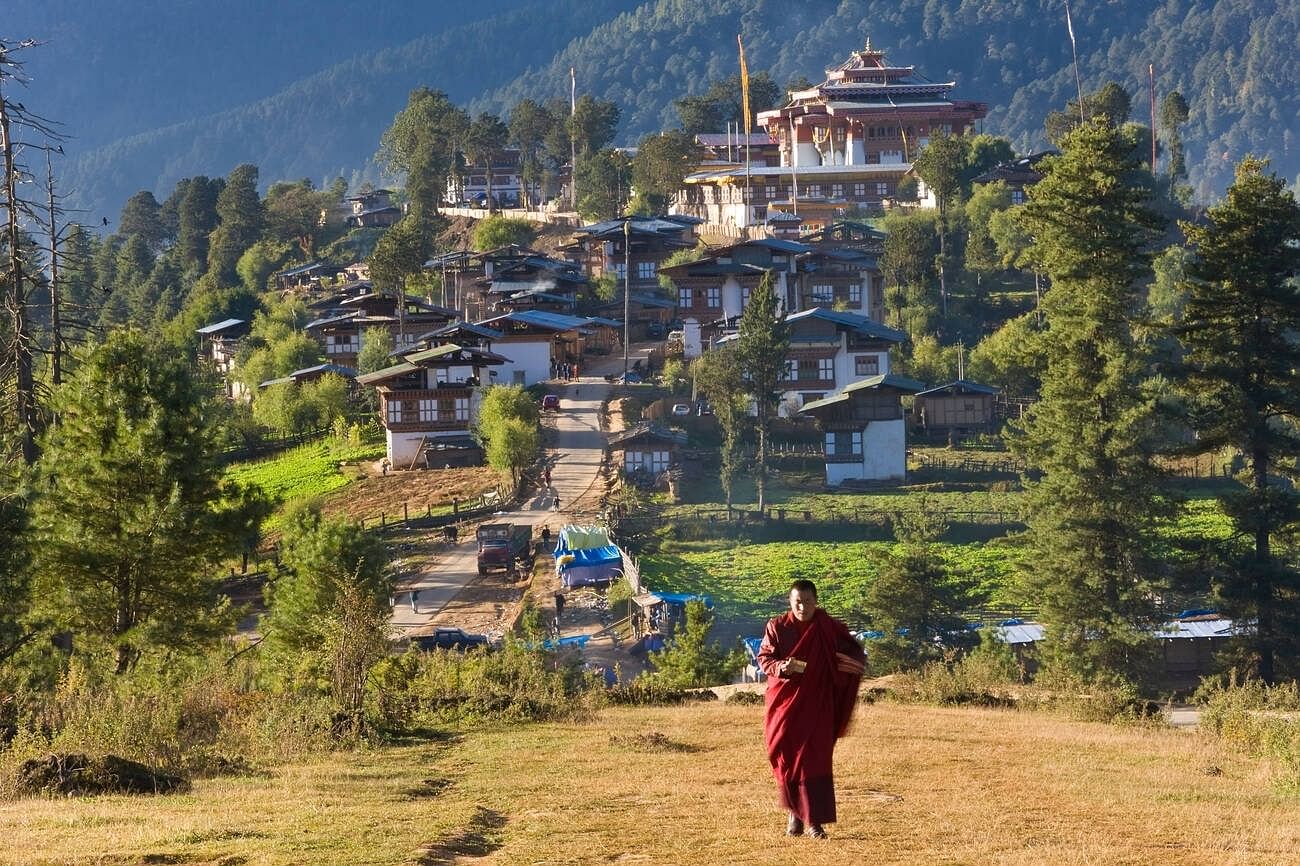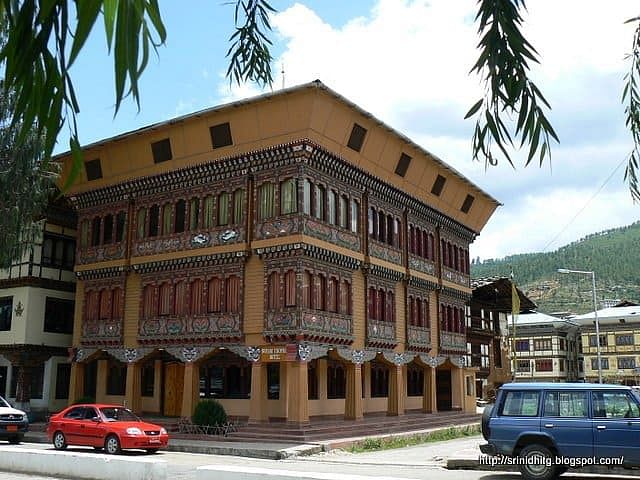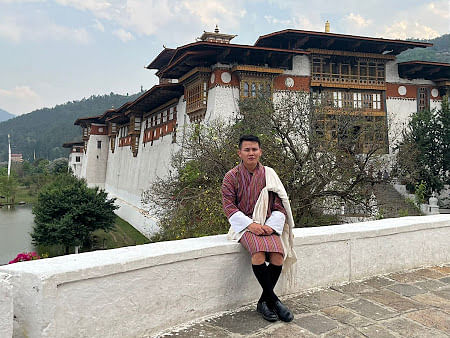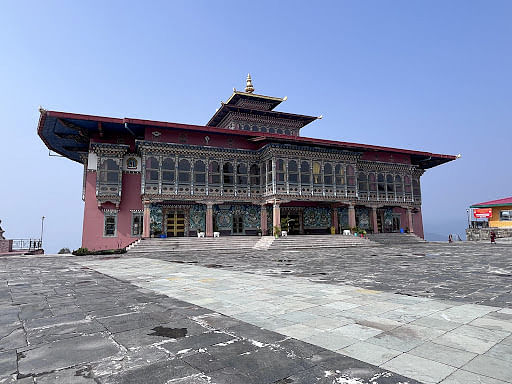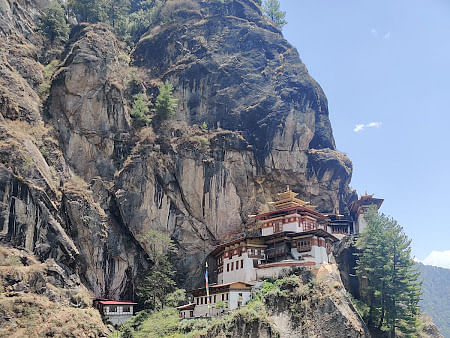Kyichu Lhakhang is honestly one of those places that takes your breath away the moment you see it. Sitting in Paro Valley, this temple has been here for over 1,300 years - which is pretty mind-blowing when you think about it.
The whole place has this incredible energy. You know how some old buildings just feel special? That's exactly what happens here. Kyichu Lhakhang in Bhutan isn’t just some old temple-it’s basically soaked in centuries of prayers and stories.
Locals have been rolling in here forever, and you can just sense it, honestly. The walls practically whisper their secrets if you stand still long enough.
But the real jaw-dropper? The detail. The wooden details are absolutely stunning, and those colourful prayer flags fluttering everywhere add such life to the scene. Inside, there are these ancient statues that seem to watch over everyone who visits. It's not touristy at all - real families show up with their kids to light candles and make wishes.
And those mountains? They just wrap around the temple and crank up the magic even more. Half the time, you’ll just find yourself staring at everything like, “Wow, am I actually here right now?”
If you're planning a trip to Bhutan, do yourself a favour and drop by Kyichu Lhakhang. Our Bhutan Tour Packages include stops here because we know how special this place really is. Some experiences you just have to see for yourself.
A First Look at Kyichu Lhakhang
So, rolling up to Kyichu Lhakhang, you just know you’re somewhere that matters. It’s tucked away in Paro Valley - honestly, blink and you might miss it, it’s that small. But, yikes, the vibe? Off the charts. That crisp white with the gold roof just glows in the sunlight, and the green mountains lurking behind? Chef’s kiss. There’s prayer flags everywhere, flapping like they’re trying to tell you secrets. Kinda feels like someone pressed pause on the world for a minute.
Now, the legendary Bhutan. Supposedly, this whole thing goes back to the 7th freaking century. Tibetan king, Songtsen Gampo, had a wild idea: build 108 temples in a single day (like, who even thinks of that?). The story goes, there was a demoness making trouble for Buddhism, so they literally built Kyichu Lhakhang in Bhutan to pin her left foot down. The drama. You can almost feel it in the air, that mix of spooky ancient myth and die-hard devotion that’s lasted more than a thousand years.
History of Kyichu Lhakhang
The history of Kyichu Lhakhang is fascinating. Centuries of kings, monks, and even the odd wandering travellers have left their mark here. Fast forward to the 1400s, and boom: Pema Lingpa, Bhutanese saint extraordinaire, stumbles on a hidden treasure inside. Not a bad day at the temple, right? That just ramped up the spiritual cred, and suddenly, people are flocking here like it’s the spiritual Coachella.
Skip ahead a few centuries, and the Royal Queen Mother steps in during the 1800s, sprucing the whole place up-new statues, extra buildings, the works. These days, you walk around and it’s this perfect mashup of ancient and new. You feel like you’re time-travelling, except, you know, with better cell service.
Oh, and the Jowo Shakyamuni statue? It’s the real deal. Supposedly ancient, definitely sacred. You get up close and it’s hard not to feel a little bit awestruck. Like, if you don’t get chills, check your pulse.
Architecture of the Kyichu Lhakhang
The architecture of Kyichu Lhakhang is a testament to traditional Bhutanese design. If you’re into architecture, Kyichu Lhakhang is a bit of a treat. It’s classic Bhutanese: whitewashed walls, gold roofs, and those wooden windows with carvings so detailed you’d think someone lost years of their life making them perfect. The place is actually two temples stuck together-the OG Jowo Temple and the later Guru Lhakhang.
Step inside and it’s a riot of colours and images. Murals everywhere, statues tucked into corners, Buddhist legends basically wallpapered onto every surface. The Jowo Temple’s got this statue of Jowo Jamba, which, according to locals, is one of the valley’s greatest treasures. Honestly, you can see why there’s just something about it.
Long story short: Kyichu Lhakhang Temple Bhutan, isn’t just another stop on the tourist trail. It’s one of those places that leaves a mark, even if you’re just breezing through.
Kyichu Lhakhang Travel Guide
Here’s a quick Kyichu Lhakhang Travel Guide to plan your visit:
- Location: Paro, Bhutan
- Entry Fee: Usually included in Bhutan’s daily tourist tariff
- Opening Hours: 9 AM - 5 PM (may vary)
- Dress Code: Modest clothing required
- Time Needed: 1-2 hours
- Nearby Attractions: Tiger’s Nest Monastery, Paro Dzong, National Museum
This guide helps you organise your day without missing anything important.
What to See at the Kyichu Lhakhang
Here’s what to see at the Kyichu Lhakhang when you visit:
Honestly, Jowo Jamba is the main character at Kyichu Lhakhang. Everyone just gravitates towards it, like it’s got its own gravity field. That Buddha face? The definition of inner peace makes you wanna chill out just looking at it. There’s this ancient, kinda electric energy in the air. Like, you stand there and you just know you’re in the presence of something that’s been around longer than anyone in your family tree.
2. Thousand-Armed Chenrezig
Eleven heads, a thousand arms… I mean, come on, it’s almost overkill (but in a good way). All those arms are straight-up compassion overload. The whole thing’s so detailed, it’s a total “Where’s Waldo?” situation-new stuff pops out at you every time you look. Forget snapping a selfie; this statue’s basically a masterclass in why Buddhist art is next-level.
So, built in, 68-not Woodstock, but still groovy in its own way. This spot throws extra flavour into Kyichu Lhakhang, with heavyweights like Padmasambhava and Kurukulla holding it down inside. The vibe? Kinda like Bhutan’s spiritual mixtape. Seriously, you walk in and it just hits different.
Walk out and it’s like, wham, instant calm. The courtyard’s got prayer flags flapping everywhere, weathered chortens, and these two orange trees that are basically eternal-fruit year-round, no sweat. Perfect place to just sit, zone out, and pretend you’re in some meditation commercial-except this one’s legit.
People are spinning these things like it’s their day job (but way holier). Give one a spin-clockwise, unless you want bad karma-and supposedly you’re launching prayers straight into the cosmos. It’s low-key addictive, not gonna lie.
Lighting these is a pure Bhutan starter pack. It’s all about pushing back the darkness, both real and in your head. The ritual’s got this subtle magic; you feel like you’re joining a club that’s been running for centuries, and all it takes is a flame.
7. Murals and Wood Carvings
Inside, the walls are just wild colours everywhere, deities, epic stories, life lessons, the works. The carvings are so detailed they’ll make your brain hurt (in a good way). Honestly, it’s like wandering through a Buddhist comic book, but with more soul.
8. Kichu Zangchoe Moenlam Festival
Once a year, the temple just goes off. Three days straight of rituals, prayers, and local flair turned up to max volume. This is the time to see Bhutanese culture go absolutely bonkers in the best possible way. Trust us, you won’t need an Instagram filter for this one.
Things to Do in Kyichu Lhakhang
When visiting Kyichu Lhakhang, there’s more to do than just admire the temple:
First thing you gotta do? Grab a butter lamp, light it up, and toss your prayers into the universe. Locals have done this for ages. It’s all about chasing away the literal and metaphorical darkness while hoping for a sprinkle of blessings. Honestly, there’s something super chill about it; you just zone out and feel the old-school vibes.
Don’t just stand around. Walk clockwise (yeah, that’s important), give those prayer wheels a good spin, and let your worries spin away too. Supposedly, every spin is like sending out a little wish, racking up good karma points. It’s easy, a bit meditative, and, let’s be real, kind of addictive once you get into it.
3. Visit Guru Lhakhang Temple
Right next door, there’s Guru Lhakhang. It’s dedicated to Guru Rinpoche. You’ll find some wild statues-Padmasambhava and Kurukulla, if you’re into collecting deity names. It’s not just eye-candy; you’ll actually get what makes Bhutanese spirituality tick.
The courtyard? Major chill zone. Green everywhere, prayer flags doing their flappy dance, and, get this, two orange trees that just refuse to stop fruiting. It’s the kind of spot where you wanna just sit, breathe, and maybe pretend you’re a poet for a minute.
Land here during the Kichu Zangchoe Moenlam festival, and it’s a whole different vibe. Locals go all out in traditional gear, monks are chanting up a storm, and there’s colour everywhere. It’s like stepping into a living postcard-except way cooler and slightly louder.
6. Admire Murals and Woodwork
Inside the temple, notice vivid murals depicting Buddhist deities and legends. The intricately carved wooden pillars and beams reflect Bhutanese craftsmanship, offering both artistic inspiration and cultural education to visitors of Kyichu Lhakhang Bhutan.
Walk with the locals, spin some wheels, hum along with chants (or just listen). You get a front-row seat to how people actually practice their faith here. It’s real, it’s raw, and it’s way more interesting than reading about it in some dusty guidebook.
Don’t forget your camera or phone. The place is a goldmine for photos-ancient temple stone, fluttering prayer flags, mountains rolling in the background. You’ll want proof you actually found this little pocket of peace. Plus, your Instagram’s gonna thank you.
Best Time to Visit Kyichu Lhakhang
The best time to visit Kyichu Lhakhang is during spring (March-May) or autumn (September-November). In spring, the valley is full of blooming flowers, adding colour and fragrance to the visit. In autumn, the skies are clear, and the mountain views are breathtaking.
These months are also ideal if you want to attend local festivals, which are vibrant, colourful, and full of energy. Visiting duringthe off-season is possible, but the weather can be unpredictable with rain or mist covering the valley.
How to Reach Kyichu Lhakhang
Wondering how to reach Kyichu Lhakhang? It’s simple.
By Air: Arriving at Paro International Airport
- International Gateway: Paro International Airport (PBH) is the sole international airport in Bhutan. It is well-connected to major cities like Kolkata, Delhi, and Bangkok. Flights are operated by Drukair and Bhutan Airlines.
- From the Airport to Kyichu Lhakhang: Kyichu Lhakhang is approximately 10 kilometres (about 6 miles) from the airport. The drive takes around 15-20 minutes. You can hire a taxi directly from the airport or arrange a pickup through your hotel.
By Road: From Paro Town and Thimphu
- From Paro Town: Kyichu Lhakhang is located about 5 kilometres (3 miles) north of Paro town centre. The drive takes approximately 10-15 minutes. Taxis are readily available, or you can rent a bicycle for a more scenic route.
- From Thimphu: If you're travelling from Bhutan's capital, Thimphu, Kyichu Lhakhang is about 55 kilometres (34 miles) away. The journey takes approximately 1.5 to 2 hours by car. Regular buses and taxis operate between Thimphu and Paro.
By Foot: A Scenic Hike
- Distance and Duration: For those seeking an active experience, you can hike from Paro town to Kyichu Lhakhang. The distance is approximately 5 kilometres (3 miles), and the hike takes about 1 to 1.5 hours. The route offers beautiful views of the Paro Valley and a chance to immerse yourself in the natural beauty of Bhutan.
By Bus: Budget-Friendly Option
- Local Buses: Local buses operate between Paro town and Kyichu Lhakhang. The journey covers approximately 4.9 kilometres (3 miles) and takes about 10-15 minutes. Buses run at regular intervals throughout the day, making it a convenient and economical option for travellers.
Places to Visit Near Kyichu Lhakhang Bhutan
While you’re in Paro, there are some other amazing spots nearby:
1. Taktsang Monastery (Tiger’s Nest)
One of the most famous places near Kyichu Lhakhang Bhutan, Taktsang Monastery, sits dramatically on a cliff. The hike up through pine forests is beautiful and peaceful. Legend says Guru Padmasambhava meditated here, making it a deeply spiritual and inspiring spot.
About 9 km from Kyichu Lhakhang, Paro Rinpung Dzong is a stunning fortress-monastery. It is still active today, housing monks and administrative offices. If you visit during the Paro Tshechu festival, you can see traditional dances, colourful masks, and lively rituals.
3. Paro National Museum (Ta Dzong)
Just a short distance from Kyichu Lhakhang in Bhutan, the Paro National Museum sits in an old watchtower. Inside, you can explore Bhutan’s history, traditional arts, and religious artefacts. Don’t miss the views of Paro Valley from the top-it’s a photographer’s delight.
4. Jangtsa Dumtseg Lhakhang
This small temple, located around 5 km from Kyichu Lhakhang, is built in the shape of a chorten, which is quite rare. Its murals tell stories from Buddhist teachings and local legends. It’s a quiet place where you can enjoy peace and reflect while exploring Bhutanese culture.
5. Haa Valley & Chele La Pass
A little farther away, around 70 km from Kyichu Lhakhang Bhutan, Haa Valley and Chele La Pass are perfect for nature lovers. Chele La Pass offers incredible Himalayan views, and Haa Valley has traditional villages and green landscapes. It’s a great day trip for scenic beauty and fresh mountain air.
Kyichu Lhakhang Travel Tips
Here are some practical Kyichu Lhakhang travel tips for a smooth visit:
- Dress modestly - Cover shoulders and legs as a sign of respect.
- Photography - Ask before taking photos inside the temple.
- Respect Local Customs - Walk clockwise around the temple and spin prayer wheels in the correct direction.
- Visit Early or Late - Avoid crowds for a peaceful experience.
- Hire a Guide - A local guide can explain legends, history, and important details you might miss.
These tips helps you enjoy the temple while respecting its sacredness.
Visiting Kyichu Lhakhang Paro Bhutan, is like stepping into history. It’s a place where legends come alive, where architecture and art meet spirituality, and where you can take a moment to reflect and connect with Bhutanese culture.
Whether you are visiting for religious reasons, to admire the beautiful architecture, or just to experience Bhutan’s peaceful atmosphere, Kyichu Lhakhang will leave a lasting impression. The surrounding valley, the chanting monks, the murals, and the stories behind the temple make it one of the most meaningful places in Bhutan.
Don’t miss the chance to include Kyichu Lhakhang on your Paro itinerary. It’s small in size but huge in history, culture, and spiritual energy-a true gem of Bhutan.




